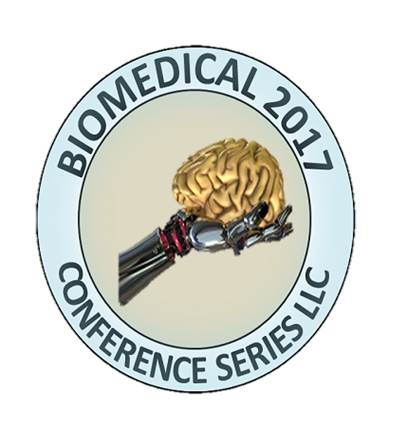
Abraham Atta Ogwu
University of the West of Scotland, UK
Title: Visible light activated silver oxide antimicrobial coatings with potential orthopedic and medical implant applications
Biography
Biography: Abraham Atta Ogwu
Abstract
One of the best and most utilized semiconductor photo-catalyst reported currently in literature is titanium dioxide. Titanium dioxide has many advantages as a photo-catalyst such as low cost, availability, chemical and photochemical stability. It is however having a band gap of about 3.1 ev and is activated using ultraviolet radiation which is costly to generate. Several attempts have been made to develop photo-catalysts activated using visible light, but the development of a photo-catalyst that is cheap enough and activated using visible light, has remained a major challenge to date. We have prepared optically transparent and visible wavelength photo-catalytically activated antimicrobial silver oxide thin films using reactive magnetron sputtering. Our X-ray diffraction analysis of the films confirmed the presence of two phases Ag2O and Ag4O4 reported in literature to have antimicrobial properties. The chemical composition and stoichiometry of the films was monitored with Raman spectroscopy and X-ray photoelectron spectroscopy (XPS) using the peak shape of the Ag3d5/2 and Ag3d3/2 binding energy peaks. Spectrophotometry was used to determine the optical band gap in the visible wavelength range and confirm up to 80% optical transmission in the visible in the films. The release of silver ions in water and saline solution by the films was confirmed with atomic absorption spectroscopy measurements. Microbial cell adhesion and growth on the films was imaged with the scanning electron microscope (SEM). We also confirmed complete microbial cell deaths of Escherichia coli, Pseudomonas aeruginosa, Staphylococcus epidermidis and Staphylococcus aureus within 20 minutes on exposure to the silver oxide films using killing curve measurements. The mechanism of bacterial attack by the films can be associated with silver ion release, the ease of ligand replacement in the silver oxide stoichiometry and their exchange and interference with biological ligands in the microbes. Silver ion replacement of metals in the biochemical complexes in bacteria can alter their structure, function and dynamics leading to bacteria death. Our current finding opens the door to furthering the development of non-ultraviolet (UV), but visible light activated antimicrobial surfaces. The silver oxide films also have the potential to be incorporated as an antimicrobial layer with controlled ion release on orthopedic and medical implant coatings

